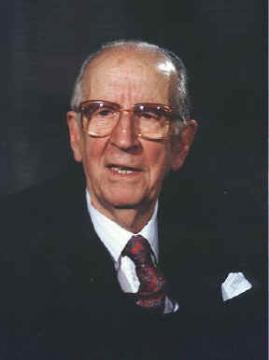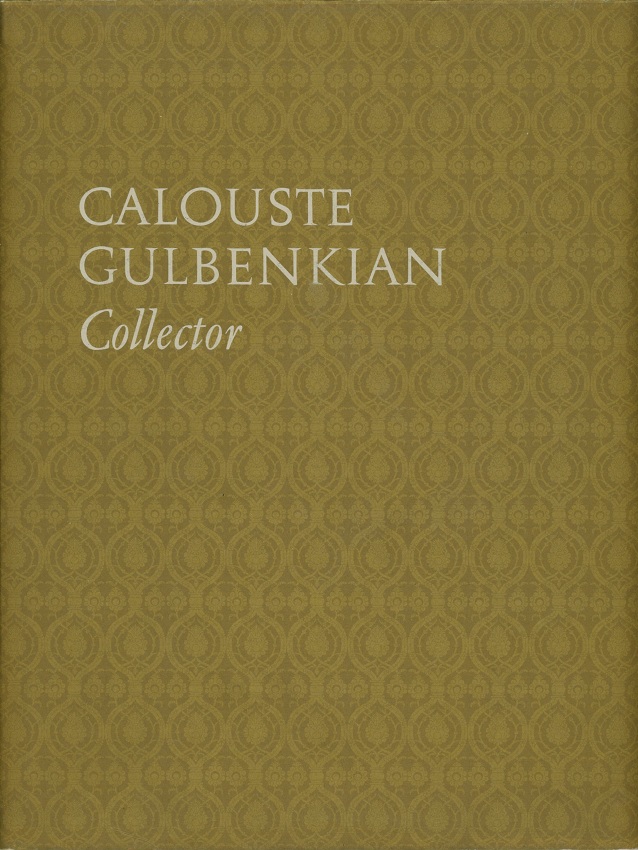IntroductionMuch has been written about Calouste Gulbenkian as the great international financier whose sphere of activity was the oil industry — a sphere where truth and legend are often intermingled.
Less is known of Calouste Gulbenkian as the collector of many priceless works of art, even though this aspect of his personality has its own absorbing interest.
A collector on the grand scale needs, first, a great deal of money. He has also to be a highly sensitive person, with a considerable knowledge of the history of art, and he must possess qualities which are usually to be found in the successful diplomat or negotiator — perception, perseverance, and tact.
When one considers that the Gulbenkian Collection contains several thousands of objects, varied in kind and very different in their origin - by far the larger part being of exceptional quality — and that the whole collection was assembled, piece by piece, by one man in a comparatively short space of time — about forty years — one cannot help but admire so remarkable a personal achievement.
Thoughts along these lines led to the suggestion that Coloquio, the cultural magazine published by the Foundation, should devote a special number to the personality of the collector. It was thought that this would interest those lovers of art who might not be aware of how Mr. Gulbenkian sought out, chose, and acquired the works of art contained in the collection which he left to the Foundation, and which was exhibited, in part, in the Pombal Palace at Oeiras. The whole collection, including the objects which are in store, has been transferred to the new museum in the former Parque de Santa Gertrudes in Lisbon.
The Editors of Coloquio were entrusted with the task of compiling the proposed special number. The plan was that it should include a general description of the collection, with more detailed studies both of the most important sections of it and also of those that were less well known. Finally, an account was to be given of the personality of the collector, and of the methods by which he achieved his exceptional results.
I was invited by the Editors to write this concluding article. The task should more properly have been carried out by someone who had known Calouste Gulbenkian well during the period in which he formed his collection, and who would therefore be aware of the motives which led him to take up this difficult and onerous enterprise. Alternatively it could have been written by an experienced art critic or historian of art. The request was put to me, however, as one who had known Gulbenkian intimately during the last years of his life.
I resolved to comply with the request because I felt it would be a way of expressing my feeling of gratitude towards Calouste Gulbenkian, my consciousness of the affection and trust he reposed in me, and my admiration for him, which grows continually as I come to have a better understanding of his work.
In carrying out what I had been asked to do, I relied in the first place on information which I knew Mr. Kevork Essayan would be able to give me. Mr. Essayan, as Mr. Gulbenkian's son-in-law, was very close to him during the last thirty-five years of his life. After Mr. Gulbenkian died, Mr. Essayan became an executor of the will and a trustee of the Foundation, and has always been meticulously faithful in the interpretation of his father-in-law's wishes.
In addition, I was able to draw on my own personal recollections, and, most important of all, the information to be derived from Mr. Gulbenkian's own papers was available to me.
In response to my request, Mr. Essayan readily undertook to set down everything which, from his own knowledge, might be relevant to my purpose.
He did not, however, offer me simply a short account of what he remembered about the formation of the collection. He did far more; and what he wrote is a graceful tribute, which brings out admirably the salient aspects of his father-in-law's personality as an art collector.
As soon as I read what he had written, I realized I could not adopt his words as my own or even alter them in any way. I decided to publish it complete in itself and to make it, as it were, the starting point for my own work. It therefore comes immediately after this introduction. It will do much to enhance the memory of Calouste Gulbenkian and to increase our knowledge of the times in which he lived.
In planning this book I naturally took into account my own limitations as a research-worker, as a critic of art, and as a writer. The plan I have therefore adopted is to let Calouste Gulbenkian introduce himself as an art collector rather than to attempt to do this myself. This was made possible by using his private diaries and his notes of conversations with those with whom he was in contact in the course of his career as a collector, together with the correspondence and memoranda which are preserved among his papers. I have concluded the book with a review of what others have published on the subject.
The chief part of this formidable undertaking consisted, therefore, of a summary of the documents I have mentioned. This--if I leave out of account for the moment Mr. Essayan's tribute to his father-in-law — forms the first and certainly the most important part of the book, perhaps the only part which has any merit.
My purpose throughout has been to present the personality of Gulbenkian as one of the outstanding collectors of our time, and as I have said I have attempted to do this by drawing on my own recollections, on what I have learnt from Kevork Essayan, and on what I have read in the numerous documents which I have consulted.
In the course of planning my work in this way, it became clear that I was now proposing to do far more than would have been needed for an article in Coloquio. This idea had therefore to be abandoned, and the present book is the result.


